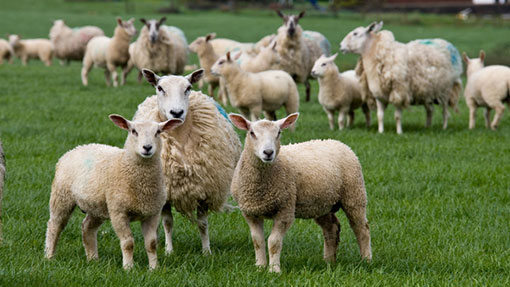Cobalt deficiency could be limiting lamb growth

Cobalt deficiency is threatening to limit lamb growth rates, technicians are warning.
Despite the fact it has been an exceptional year for grass growth, many farmers are reporting later lambs have not been flourishing.
Nia Williams from Nettex Technical says forage mineral analysis conducted by the animal nutritional company revealed average cobalt levels in forage only rations were below lamb average daily requirements.
“The wet weather last winter and spring has contributed to trace elements being leached from soils.
See also: Sheep nutrition and feed
“This, combined with grazing quality now declining, and in come cases drying up due to the recent hot weather, has meant lambs are not thriving and the lack of cobalt seems to be a contributing factor.”
Rumen bacteria require a level of cobalt to be able to synthesise vitamin B12, which is essential for energy metabolism and efficient lamb growth.
Symptoms
- Ill-thrift.
- Lack of appetite; resulting in longer finishing times and reduced carcass weights.
Lambs have a limited capacity to store cobalt and therefore need supplementation.
Weaned lambs are at highest risk of clinical cobalt deficiency or “pine”.
This is because ewes synthesise their own vitamin B12 and a proportion is passed on to lambs in her milk.
However, once weaned they lose vitamin B12 supplementation via milk.
“Combined with their delayed increase from grazing [this] can mean lambs do not push on well, particularly in areas that are deficient in the trace element,” adds Ms Williams.
Ms Williams advises farmers who think lambs may be suffering from cobalt deficiency to get forage analysed or blood samples taken.
“If farmers are aware they are in an area where cobalt is deficient, an initial drench administered to lambs, followed by a bolus from the age of five weeks, can be an effective programme to avoid the risk of deficiency post weaning.”
